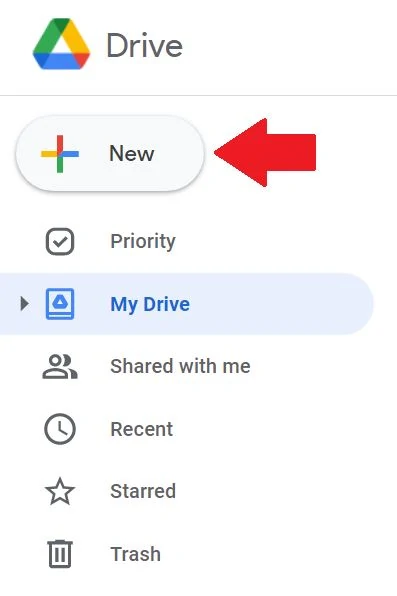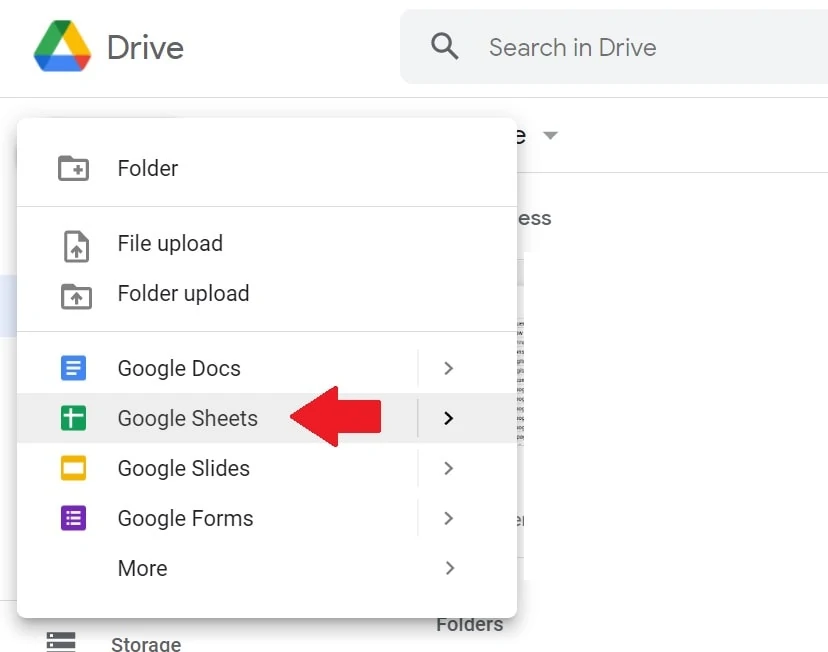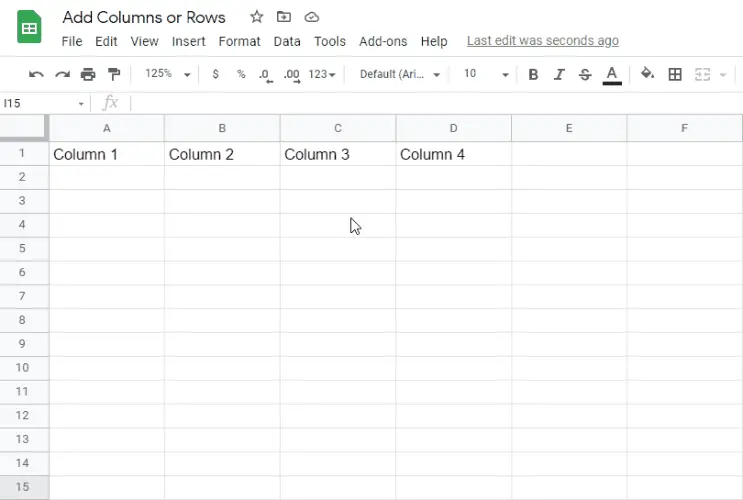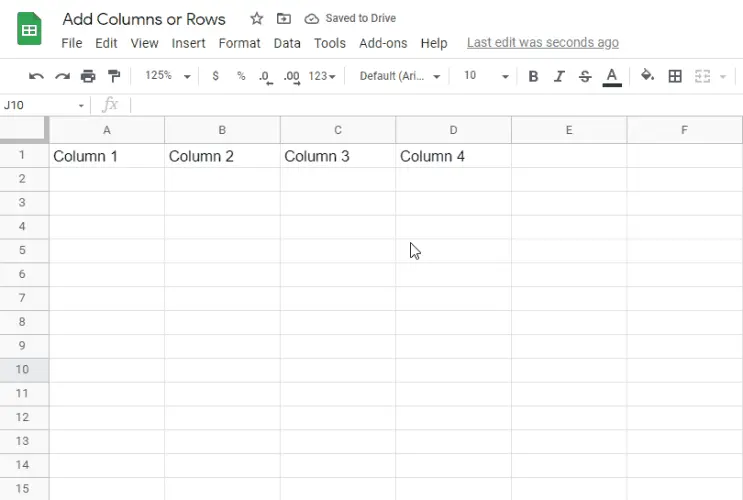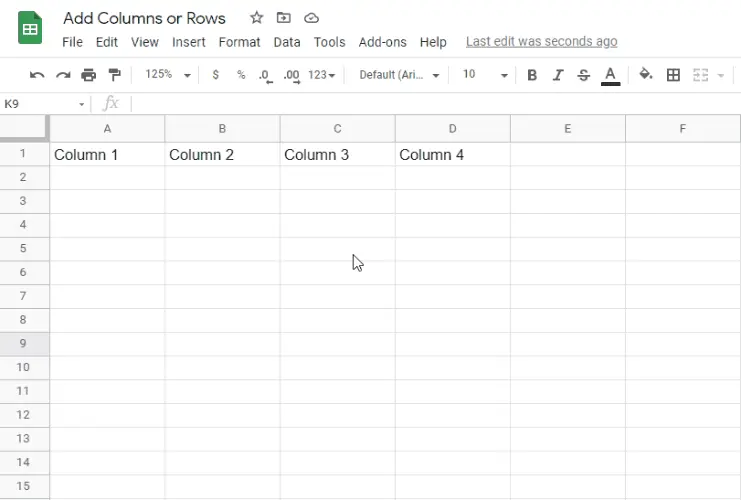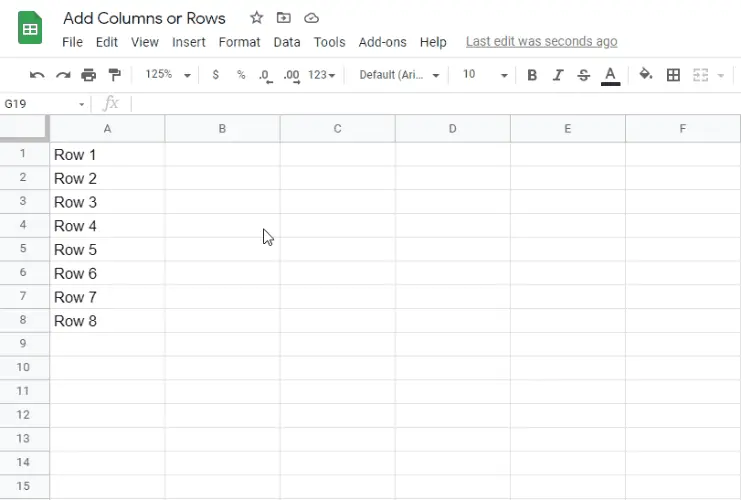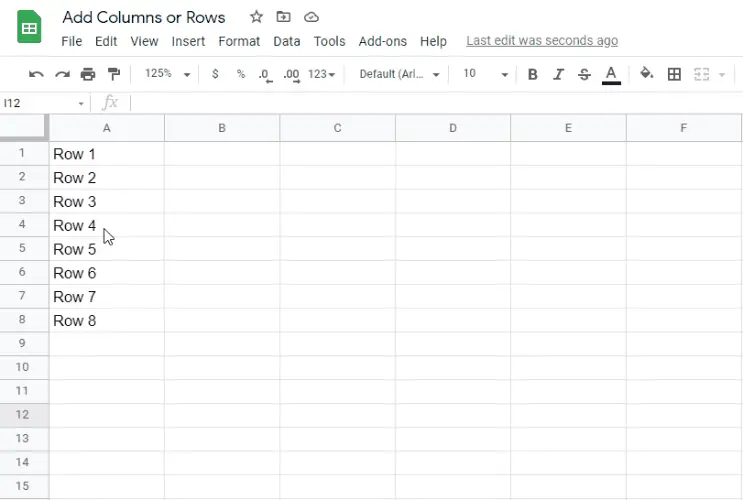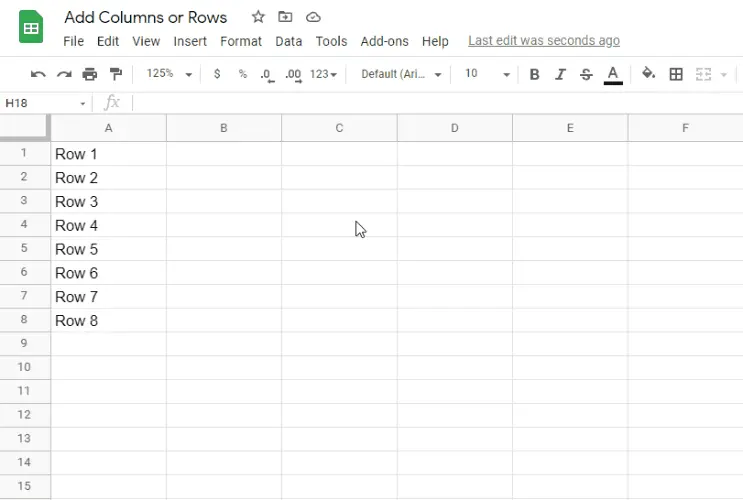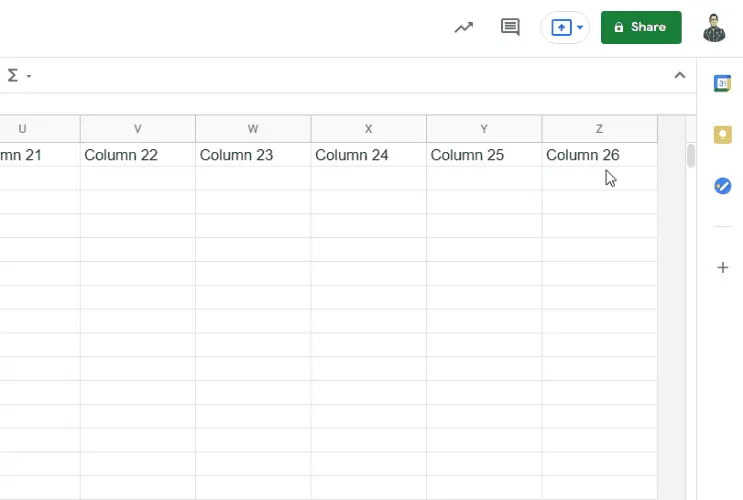“How do I insert a column in Google Sheets?”
Analyst
“How do I add multiple rows in Google Sheets?
Google Sheets is important in the workplace, especially for analysts. Like Gmail or Microsoft Word, Google Sheets is undeniably part of the office workflow. It’s a rare occurrence that you DO NOT come across Google Sheets or any spreadsheet in your work.
That said, Google Sheets is a melting pot of features like writing formulas. And most people don’t know about some nifty features. Most are overlooked or they need a refresher.
That being said, let’s start. Create a new Google Sheets file on your computer.
1 – Go to your Google Drive workspace.
2 – Click ‘+ New’ then create a new Google Sheets file.
Add Columns or Rows in Google Sheets
In this article, you’ll learn how to add columns and rows in a spreadsheet without fancy formulas. There are super easy ways to add columns in Google Sheets. In this article, we’ll demonstrate how to add columns first then demonstrate rows after.
How To Add Columns In Google Sheets
We’ll tackle how to add columns first. Below are the different methods. Remember that columns contain the vertical data that goes from top to bottom.
Method 1: Add Columns In Google Sheets Using Taskbar or Menu
1 – Go to the cell of the column you want to add.
2 – Go to the taskbar or menu at the top and click “Insert”.
3 – Click either “Column left” or “Column right”
This adds a column at the left side or at the right side. Note that this adds one column only. If you prefer to add more columns, highlight more cells horizontally. If you highlight five cells and do the process, you add five columns.
Method 2: Add Columns In Google Sheets Using Manual Clicking
1 – Go to the column you want to add.
2 – Click the letter of that column stated at the top. This highlights the entire column.
3 – Right-click.
4 – Click either “Insert 1 left” or “Insert 1 right”.
This adds a column at the left side or at the right side. Like the previous method, this adds one column only. If you prefer to add multiple columns, highlight more columns. If you highlight five columns and do the process, you add five columns.
Method 3: Add Columns In Google Sheets Using Keyboard Shortcuts
1 – Go to the cell of the column you want to add.
2 – For PC users, press CTRL + SPACEBAR. For Mac users, press CONTROL + SPACEBAR. This highlights the entire column.
3 – For PC users, press CTRL + PLUS/EQUALS KEY. For Mac users, CONTROL + PLUS/EQUALS KEY.
This adds a column on the left side by default. This method has a limitation because this adds one column on the left only. If you prefer to control more, use Method 2 instead.
That’s it! Adding columns shouldn’t be that hard in Google Sheets. Note that you can mix the methods to suit your workflow. For example, you can use Method 2 in highlighting the columns but then use Method 3 to add new columns.
Next is adding rows…
How To Add Rows in Google Sheets
We’ll now tackle how to add rows. Remember that rows contain the horizontal data that goes from left to right. The steps of adding rows are identical to adding columns. And they are super easy to do.
Method 1: Add Columns In Google Sheets Using Taskbar or Menu
1 – Go to a cell of the row you want to add.
2 – Go to the taskbar or menu at the top and click “Insert”.
3 – Click either “Row above” or “Row below”
This adds a row above or below. Note that this adds one row only. If you prefer to add multiple rows, highlight more cells vertically. If you highlight five cells and do the process, you add five rows.
Method 2: Add Columns In Google Sheets Using Manual Clicking
1 – Go to the row you want to add.
2 – Click the number of that row stated on the left side. This highlights the entire row.
3 – Right-click.
4 – Click either “Insert 1 above” or “Insert 1 below”.
This adds a row above or below. Like the previous method, this adds one row only. If you prefer to add multiple rows, highlight more rows. If you highlight five rows and do the process, you add five rows.
Method 3: Add Columns In Google Sheets Using Keyboard Shortcuts
1 – Go to the cell of the row you want to add.
2 – For PC users, press SHIFT + SPACEBAR. For Mac users, press SHIFT + SPACEBAR as well. This highlights the entire row.
3 – For PC users, press CTRL + PLUS/EQUALS KEY. For Mac users, CONTROL + PLUS/EQUALS KEY.
This adds a row above by default. This method has a limitation because this adds one row above only. If you prefer control more, use Method 2 instead.
That’s it! Adding rows shouldn’t be that hard in Google Sheets. Note that you can mix the methods to suit your workflow. For example, you can use Method 2 in highlighting the rows but then use Method 3 to add new rows.
Can Google Sheets Have More Than 26 Columns?
Yes.
If you noticed, Google Sheets has 26 columns only by default. 26 columns represent the alphabet. But don’t worry, you can add more columns after Column Z. In fact, Google Sheets can have hundreds of columns for analysis.
All you need to do is go to the last column and add a new one using the methods demonstrated above. But this time, add a column to the right side instead.
Tip: How To Use Columns and Rows in Analysis
When using columns and rows in Google Sheets, you need to know the values to insert in those cells and formulas. Spreadsheets contain multiple data points. You need to be aware of what’s called data structures especially with their values.
For columns, it should contain homogenous values. It means that columns should be one type of data. If the data is a list of dates, the entire column should be dates only. If the data is a list of names, the entire column should be names only. If the data is sales, the entire column should be sales numbers only.
For rows, it should be the information of one entity. For example, when you highlight a date in a row, everything in the row is the data for that date. When you highlight a name in a row, everything in the row is the data for that specific person. When you highlight a product in a row, everything in the row is the data for that product.
Conclusion: Google Sheets is easy to use
Adding columns or rows in Google Sheets doesn’t need any formula. Whether you’re acquiring data or cleaning data, Google Sheets isn’t hard to use. You need to contextualize what you need to get the most out of it. Google Sheets is a popular and powerful tool in the workplace. When used properly, it’s powerful to automate many things in your workflow.

